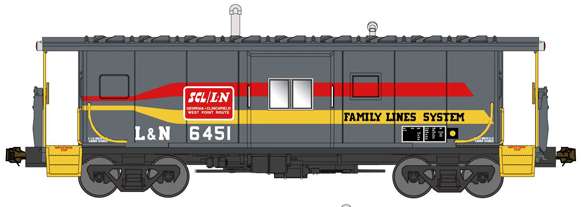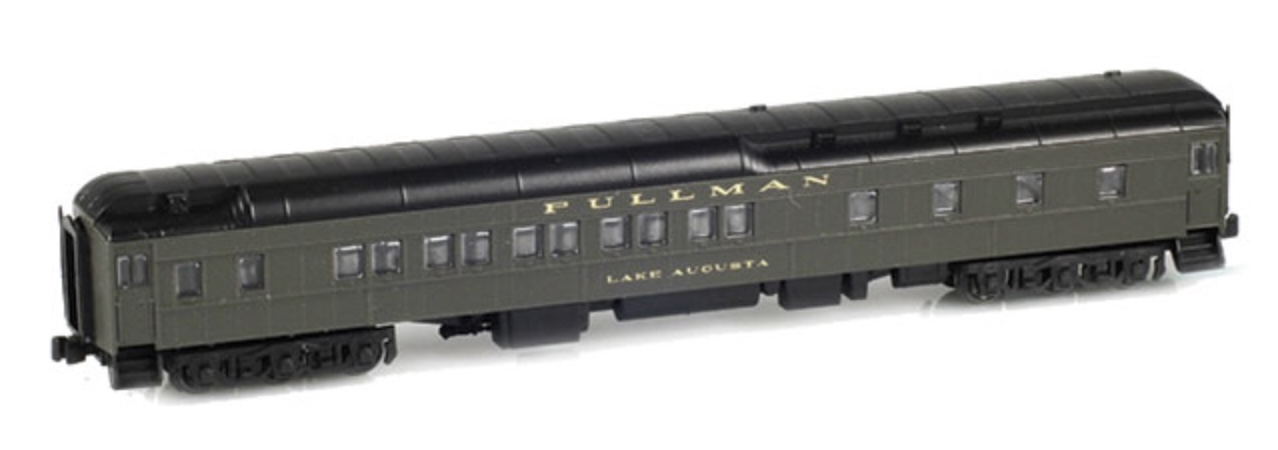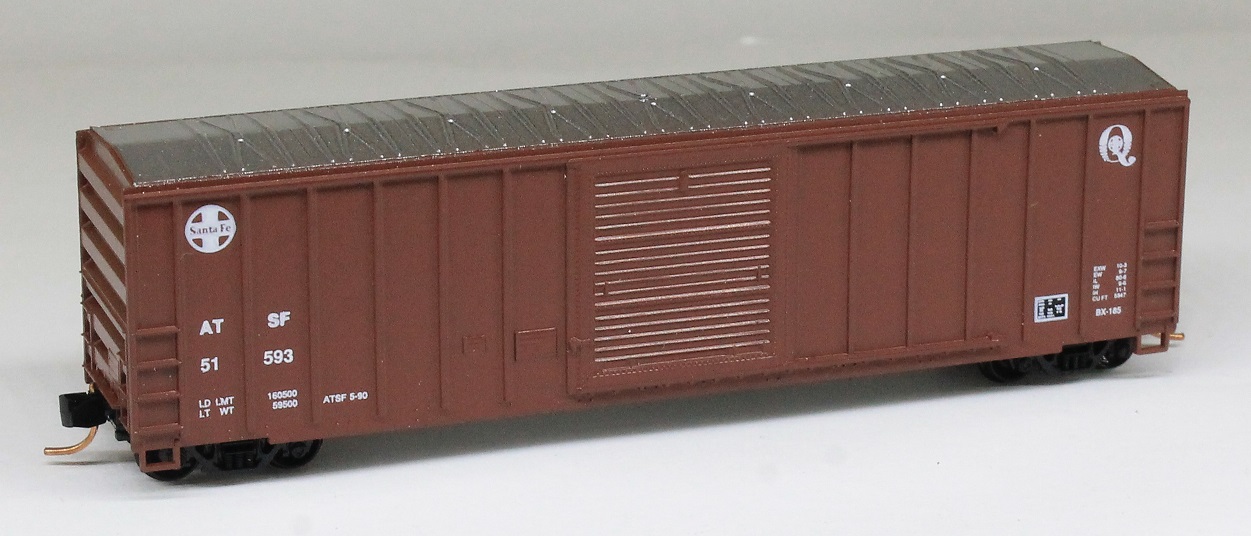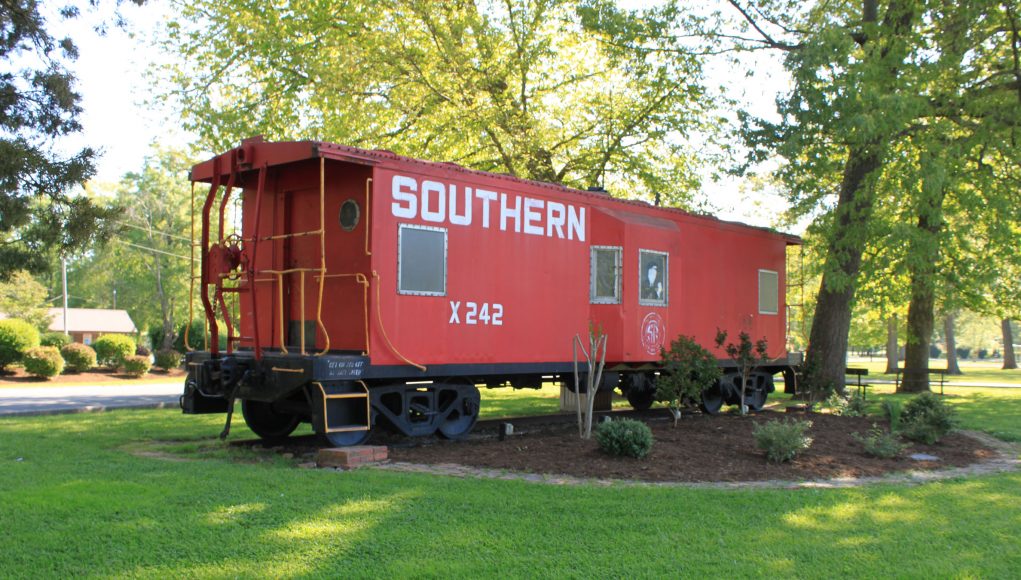Prototype History: In a bay window caboose, the crew monitoring the train sits in the middle of the car in a section of wall that projects from the side of the caboose. The windows set into these extended walls resemble architectural bay windows, so the caboose type is called a bay window caboose. This type afforded a better view of the side of the train and eliminated the falling hazard of the cupola. The bay window gained favor with many railroads because it eliminated the need for additional clearances in tunnels and overpasses. On the west coast, the Milwaukee Road and the Northern Pacifc Railway used these cars, converting over 900 roof top cabooses to bay window cabooses in the late 1930's. Milwaukee Road rib-side window cabooses are preserved at New Libson, Wisconsin, the Illinois Railway Museum, the Mt. Rainer Scenic Railroad, and Cedarburg, Wisconsin.
When the shift was made from wooden to steel caboose construction, a new type of caboose also arrived. The new caboose design replaced the traditional roof-mounted “cupola” with “bay-windows” attached to the sides of the caboose. As freight cars grew taller, the effectiveness of cupolas as practical observation points was diminished. This was especially true on lines that suffered from low clearances and were incapable of making cupolas high enough to see over the top of the tallest freight cars. Cabooses were prone to rough handling, and many a trainman was knocked out of his perch in the cupola and injured when he fell. The new caboose design was safer as well as more effective.
When the shift was made from wooden to steel caboose construction, a new type of caboose also arrived. The new caboose design replaced the traditional roof-mounted “cupola” with “bay-windows” attached to the sides of the caboose. As freight cars grew taller, the effectiveness of cupolas as practical observation points was diminished. This was especially true on lines that suffered from low clearances and were incapable of making cupolas high enough to see over the top of the tallest freight cars. Cabooses were prone to rough handling, and many a trainman was knocked out of his perch in the cupola and injured when he fell. The new caboose design was safer as well as more effective.
Road Name History: 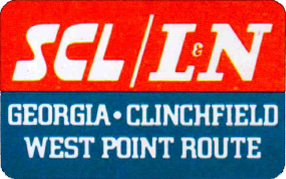 To be truthful the Family Lines System was never actually an operating railroad, it was merely a marketing tactic which brought together the allying lines of the Louisville & Nashville, Clinchfield, Seaboard Coast Line, and a number of other smaller road (such as the Georgia Railroad, Atlanta & West Point Railroad, and Western Railway of Alabama otherwise referred to as the West Point Route). With this came a new livery (not unlike the later Seaboard scheme) applied to all with sub-lettering stenciled under locomotive cabs identifying the specific company. This marketing scheme was also short-lived, lasting only from 1972 until 1982 when these railroads merged together formally to create the Seaboard System (itself operating for only a few years).
To be truthful the Family Lines System was never actually an operating railroad, it was merely a marketing tactic which brought together the allying lines of the Louisville & Nashville, Clinchfield, Seaboard Coast Line, and a number of other smaller road (such as the Georgia Railroad, Atlanta & West Point Railroad, and Western Railway of Alabama otherwise referred to as the West Point Route). With this came a new livery (not unlike the later Seaboard scheme) applied to all with sub-lettering stenciled under locomotive cabs identifying the specific company. This marketing scheme was also short-lived, lasting only from 1972 until 1982 when these railroads merged together formally to create the Seaboard System (itself operating for only a few years).
The three main components of the System were the L&N, Clinchfield, and SCL. The L&N (the first component) was a railroad synonymous with the southern states; it served major cities from New Orleans and Memphis to St. Louis, Atlanta, and later Chicago. The L&N is also one of the few classic fallen flags to never have had its original chartered name change at any point throughout its history, serving its home state and the southeast for over 120 years. As the L&N itself disappeared into the Seaboard System in 1982 just a few years later the Seaboard itself would disappear into CSX Transportation.

The three main components of the System were the L&N, Clinchfield, and SCL. The L&N (the first component) was a railroad synonymous with the southern states; it served major cities from New Orleans and Memphis to St. Louis, Atlanta, and later Chicago. The L&N is also one of the few classic fallen flags to never have had its original chartered name change at any point throughout its history, serving its home state and the southeast for over 120 years. As the L&N itself disappeared into the Seaboard System in 1982 just a few years later the Seaboard itself would disappear into CSX Transportation.
Brand/Importer Information: Bluford Shops began in 2007 as a side project of two model railroad industry veterans, Craig Ross and Steve Rodgers. They saw a gap between road names available on N scale locomotives but not available on cabooses. They commissioned special runs of Atlas cabooses in Atlantic Coast Line, Central of Georgia, Monon, Boston & Maine and Southern plus runs on Grand Trunk Western and Central Vermont on the MDC wooden cabooses. While these were in process, they began to develop their first all new tooling project, 86' Auto Parts Boxcars in double door and quad door editions in N scale. By January of 2008, Bluford Shops became a full time venture. Along with additional N scale freight cars and their own tooling for new cabooses, they have brought their own caboose line to HO scale. They also have their popular Cornfields in both HO and N. The future looks bright as they continue to develop new products for your railroad.
The town of Bluford in southern Illinois featured a small yard on Illinois Central's Edgewood Cutoff (currently part of CN.) The yard included a roundhouse, concrete coaling tower (which still stands) and large ice house. Reefer trains running between the Gulf Coast and Chicago were re-iced in Bluford. Things are more quiet now in Bluford with the remaining tracks in the yard used to stage hoppers for mines to the south and store covered hoppers. Intersecting the IC line in Bluford is Southern Railway's (currently NS) line between Louisville and St. Louis. Traffic on this single track line remains relatively heavy.
The town of Bluford in southern Illinois featured a small yard on Illinois Central's Edgewood Cutoff (currently part of CN.) The yard included a roundhouse, concrete coaling tower (which still stands) and large ice house. Reefer trains running between the Gulf Coast and Chicago were re-iced in Bluford. Things are more quiet now in Bluford with the remaining tracks in the yard used to stage hoppers for mines to the south and store covered hoppers. Intersecting the IC line in Bluford is Southern Railway's (currently NS) line between Louisville and St. Louis. Traffic on this single track line remains relatively heavy.
Item created by: CNW400 on 2020-09-19 21:51:36
If you see errors or missing data in this entry, please feel free to log in and edit it. Anyone with a Gmail account can log in instantly.
If you see errors or missing data in this entry, please feel free to log in and edit it. Anyone with a Gmail account can log in instantly.


